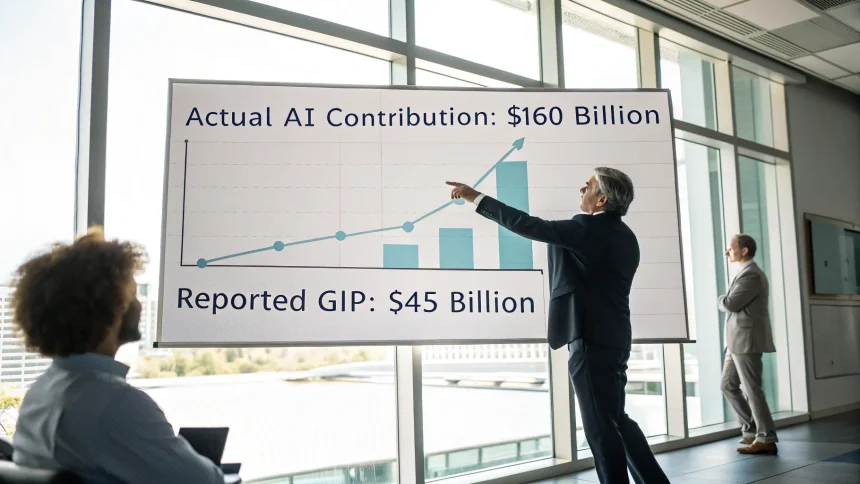Artificial intelligence has contributed approximately $160 billion to the United States economy, yet official GDP figures capture only $45 billion of this economic impact, revealing a significant gap in how modern technological growth is measured in national accounts.
This substantial discrepancy highlights a growing challenge in economic measurement as digital technologies increasingly transform business operations and consumer experiences in ways that traditional economic metrics struggle to quantify.
The Measurement Gap
The $115 billion difference between AI’s actual economic contribution and what appears in GDP statistics points to fundamental limitations in current economic measurement frameworks. GDP, designed in the industrial era, effectively captures physical goods production and traditional services but often fails to account for the full value of digital innovations.
Economists suggest several reasons for this measurement shortfall. Many AI benefits manifest as improved quality, convenience, or efficiency—value that GDP calculations typically don’t fully capture. When AI enables a company to provide better customer service or more personalized products without raising prices, the economic value created doesn’t necessarily translate into higher GDP figures.
Free Services and Consumer Surplus
Another significant factor is that many AI-powered services are provided to consumers at no direct cost. Search engines, navigation apps, and recommendation systems create substantial economic value for users, but since these services are often free, their full economic contribution isn’t reflected in GDP.
This phenomenon, known as “consumer surplus,” represents the difference between what consumers would be willing to pay for a service and what they actually pay. While consumer surplus represents real economic value, it remains largely invisible in traditional economic statistics.
Business Productivity Improvements
Within organizations, AI drives efficiency gains that may not immediately appear in economic data. When companies implement AI systems that reduce errors, speed up processes, or enable better decision-making, these improvements might show up as cost savings rather than new economic output.
These productivity enhancements represent real economic value but are often difficult to isolate and measure in GDP calculations, especially during early adoption phases when companies are still learning how to fully leverage new technologies.
Key areas where AI creates unmeasured value include:
- Process optimization and reduced waste
- Improved accuracy in predictions and forecasting
- Enhanced customer experiences
- Better resource allocation
Implications for Economic Policy
This measurement gap has significant implications for economic policy. If official statistics substantially undercount the economic contributions of new technologies, policymakers might underinvest in digital infrastructure or educational programs that support technological adoption.
The discrepancy also complicates productivity analysis. The “productivity paradox”—where massive technological investments haven’t produced corresponding productivity gains in official statistics—might partially reflect measurement problems rather than actual economic performance.
Economists and statisticians are working to develop new frameworks that better capture the economic value of digital technologies. These efforts include supplementary measures beyond GDP, such as digital inclusion metrics, quality-adjusted price indices, and direct measurement of consumer welfare gains.
As AI continues to transform the economy, the gap between its true economic impact and what appears in official statistics may grow even larger, creating an increasingly distorted picture of economic growth and technological progress.
Understanding this measurement challenge is crucial for business leaders, investors, and policymakers seeking to accurately assess the economic landscape and make informed decisions about technology investments and policy priorities in an AI-transformed economy.







